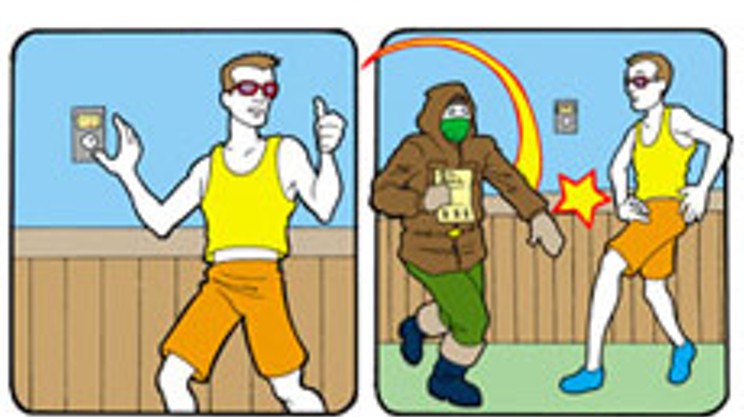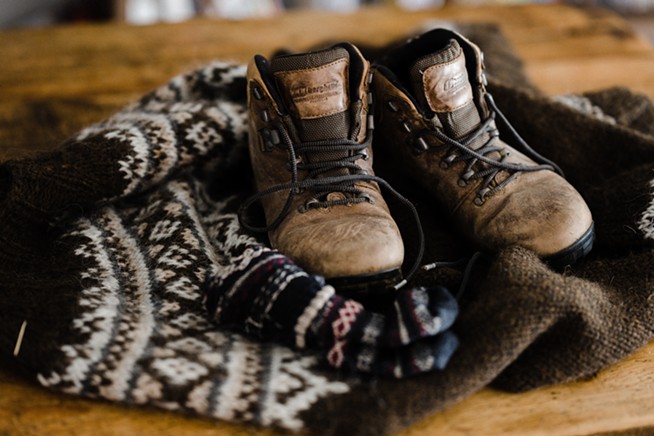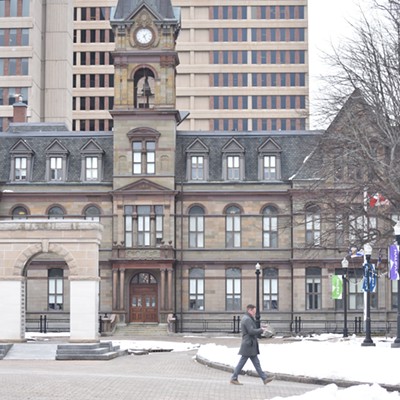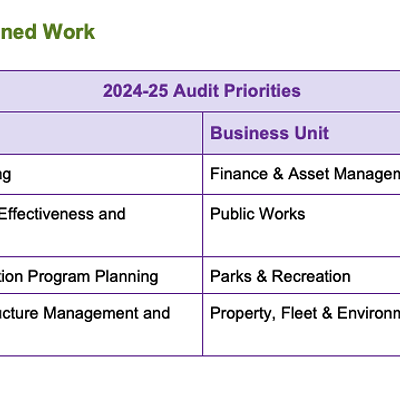We’ve had a milder mid-December with daytime highs reaching 13C and 11C earlier this week, but as the days churn on toward the coldest time of the year, there’s one thing on many Haligonians’ minds: Heating costs.
The price of home heating oil has “never, never been this high,” Scotia Fuels general manager James Farquhar told CTV News last November. Even with Ottawa carving out a three-year exemption for home heating oil from the federal carbon tax in October, it remains the most expensive way to heat a home. It is also rather unpredictable: From January to December this year in Halifax, according to Natural Resources Canada, the cost of furnace oil dropped by as much as 67 cents per litre and climbed by as much as 65 cents per litre.
Unlike our neighbours in New Brunswick and PEI, heating oils are unregulated in Nova Scotia. And while the average price of home furnace oil in the HRM is (slightly) lower today than it was in January, it has gone up nearly 26% since the start of 2022, from 129.6 cents per litre to 163 as of Dec. 12.
Which begs the question: How to stay warm on a budget?
Here at the Coast, we asked you—our readers—about how you’re dealing with heating costs this winter. An overwhelming majority (73.6% of respondents) replied that you’ll be turning down the thermostat and bundling up in “lots of layers.” Some of you commented that you’ll be relying on wood stoves. Some of you replied you’ll be shutting every door in the house and sticking to one or two rooms.
No matter whether you own or rent your home, or whether you have good strategies or not, we’ve got you covered with eight ways to save on your heating costs this winter.
1Get retrofitting
“Heating makes up about half the energy bill in most Nova Scotian homes,” says Janet Tobin, a spokesperson for Efficiency Nova Scotia, “making it the single largest use of energy for most people.”
Tobin tells The Coast there are several practical starting points for maximizing your home’s heating while keeping your costs in check—ranging from installing heat pumps to switching wood-burning stoves for pellet stoves. Both of those come with costs (and not insignificant ones either), but there are federal and provincial home efficiency grants and loans (ranging from $125 to $40,000) that can take a bit of the sting out.
Last November in Stellarton, NS, the federal government announced a $250-million investment in its Oil to Heat Pump Affordability grant, noting that homeowners who made the switch would save between $1,500 to $4,700 on home heating and cooling per year.
Tobin recommends booking a home energy assessment, in which an advisor can give you a better sense of where your home is losing most of its heat—whether it’s the windows, the attic or the walls—and what options will be most cost-effective for lowering your utility bills.
2Take advantage of free energy efficiency programs
Of course, the above options only apply (or make financial sense) if you own your home—which, according to Canada’s 2021 Census, overlooks the 42.5% of Haligonians surveyed who rent.
Tobin says there are some grants for tenants, including a free energy efficient product installation program that can provide tenants with free LED lights, faucet aerators and smart thermostats for mini split heat pumps.
She tells The Coast that, on average, those upgrades can help Nova Scotians to save $250 per year on their energy bills—”and you get to see the benefits immediately.”
The one drawback: The smart thermostats (the most helpful tools for controlling your spending on heating) aren’t available for apartments and condos.
3Master your warmdrobe
Consider the words of Conserve NS’s Donald Dodge, as relayed to The Coast in 2008: “If you’re paying your oil bill, you’d better keep your sweater on and get some slippers.”
The key to any Halifax warmdrobe is layers. And you need good, impenetrable ones when half of the homes on the peninsula are cold and damp enough they might as well have been built with old dish rags for insulation.
Coast reader Carol Smith, who follows us on Facebook, says she keeps her home at 10-12C through the winter and wears “hoodies, slippers and [a] hat.”
Randy Hume, who follows us on Twitter, takes a simpler approach: “Shivering.”
If you’re determined to avoid Randy’s fate and instead follow Carol’s advice, we suggest starting with the feet and finding yourself a pair of wool socks. (There’s nothing like a North end hardwood floor in January to trigger an instant case of Raynaud's.)
Feeling emboldened? Try a pair of indoor snowpants. Bring the ski jacket indoors. Go to bed with a balaclava. The fashion possibilities are endless.
4Overstay your welcome at every holiday function
There are two ways to go about this one, depending on your personality type.
The first is to become invisible—as inconspicuous as the furniture. Find the most chaotic room of the party and install yourself in the corner. Don’t say a word to anyone. (The key is for maximum distraction all around you. The more loud and drunken conversations, the better.) If you’re able, pre-scout the party site for any curtains or tall corner plants. Match your outfit accordingly and blend into the wall until it’s 8am and the harsh morning light is spilling in through the window and you haven’t blinked once all night and your hosts need to go shopping for laundry detergent.
The second way to overstay your welcome—and slash your heat bill in the process—is to cement yourself as the undisputed life of the party. Use actual cement, if you need it. Find yourself accidentally stuck in fast-setting concrete you just happened to bring along in a game of truth or dare you initiated? Whoops! Guess you’re staying until the paramedics arrive. And just like that, you’ve bought yourself a night out of the house in someone else’s heated home. #Winning.
5Siphon power off your neighbour
You might as well get started on this one while you’re working on Step 4. If you’re already pre-scouting your neighbour’s house and stockpiling camouflage from the Army/Navy store, take note of any external power outlets they might have. Categorize them from most visible to least visible from any windows or neighbouring homes. What you’re looking for are cobwebs, rat’s nests, tumbleweeds—any sign of obvious neglect. A power outlet that looks like it hasn’t been used since the Halifax Explosion means your odds are better of running an extension cord without attracting any attention.
Head to your nearest hardware store and find the longest extension cord money can buy. Get about 12 of them. Or 200. However many you need to cover the distance from their address to yours. Now, go back for seven more extension cords, seven space heaters and a power bar that can fit them all into one giant electric-cable octopus. (This method will cost you up front, but should pay for itself by around March or April.)
6Move into your workspace
You’re already there 40 hours of the week—what’s another 128? Tomorrow, bring a blanket and pillow to the office—or construction site, or school, or hospital, or wherever you ply your trade—and keep working until everyone’s left the building. Voila: The place is yours.
Work from home? Not a problem. Go back to the last place you worked in an office. Insist to anyone who’ll listen that you never left. Worried the blanket and pillow are too obvious to your boss and colleagues? Stash them in separate briefcases or wear them under your work clothes.
7Take a six-month trip into the Metaverse
Last month, SpaceX founder and megabillionaire Elon Musk got the green light to begin testing his Neuralink brain implant in its first round of human trials in the US. (Never mind if the implant has been dogged by calls for an SEC investigation into alleged misleading claims Musk made to investors.) Billed as “ultra high bandwidth brain-machine interfaces,” Neuralink implants are heralded by Musk—with or without merit—as holding the potential to help people with paralysis, restore eyesight and bridge other sensory gaps. In the long term, as he told Babylon Bee in December 2021, he envisions a “sophisticated Neuralink” could render VR headsets obsolete and “put you fully into virtual reality.” In other words, soon, we can all be Extremely Online.™ And stay that way, indefinitely.

You don’t have to wait for Musk to hop into the Metaverse and escape winter. Some Canadian companies are already meeting remotely through VR software. You could strap on an Oculus headset and be on a pixelated beach in Miami by noon. Want to ditch the Halifax wind and rain, say, forever? No problem. Strap yourself into a soylent feeding tube and hook yourself up to an IV supply of fluids, and your ghostly pale, near-skeletal remains can stay alive and thriving while you embark on a permanent virtual vacation.
Just make sure you’re still running those extension cords to your neighbour’s house.
8Await society’s eventual collapse
The year is 2057. A CNN news alert beams directly into your cerebral cortex, straight from the Coca-Cola satellite: Space chancellor Jeff Bezos has returned from the third human colony on Mars—now rebranded Wal-Mars—after the first two efforts ended in mutiny and cannibalism. It’s not all bad, you figure. December on Earth has brought pretty good barbecue weather. Nova Scotia’s sea levels have risen to the point where all the rocks at Peggy’s Cove are now black. Ticks are now a year-round concern, but the Lyme disease-induced fever means your body runs hot in the coldest months and the chills come in the hottest months, so you haven’t used air conditioning or heating in years.
















